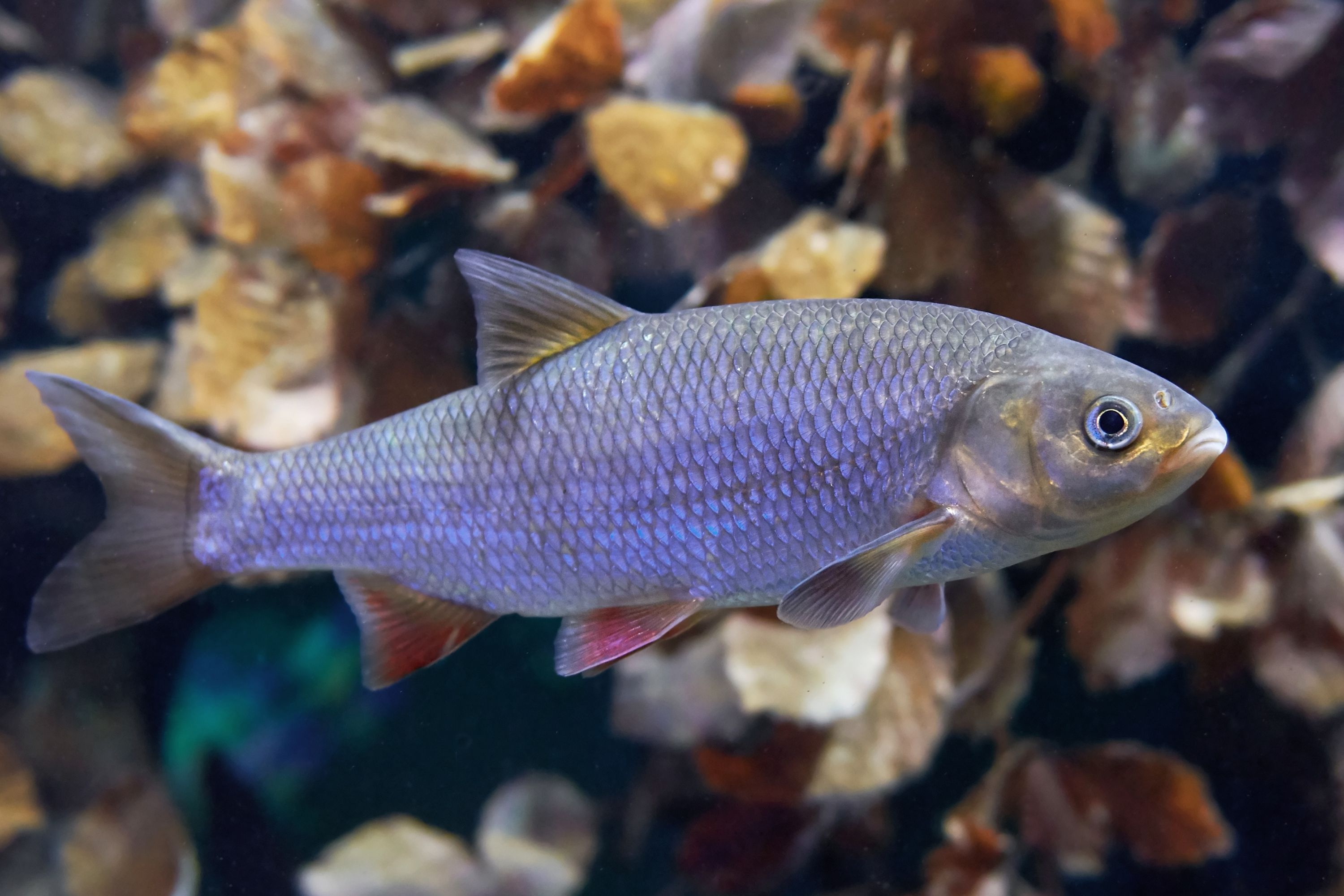Ide
(Leuciscus idus)

Description
The ide (Leuciscus idus), or orfe, is a freshwater fish of the family Cyprinidae found in larger rivers, ponds, and lakes across Northern Europe and Asia. It has been introduced outside its native range into Europe, North America, and New Zealand. It is a popular ornamental fish, usually kept in outdoor ponds in temperate regions from which it often escapes. The ide is a rather plump, sturdily built fish with a deep body, although not especially so. The peduncle of the caudal fin is thick. When they are small, ide have dark backs and silvery sides, but older fish develop a golden sheen along the flanks. At all ages, the eye is yellow and the pectoral fin and anal fin are reddish in colour. The dorsal fin has three spines and 8-11 soft rays, the anal fin has three spines and 8-11 soft rays, while the caudal fin has 19 rays. It has 47 vertebrae. It is distinguished from other European members of the genus Leucsicus by the lateral line having 56-58 scales; 3.5-5.3 pharyngeal teeth, in having a terminal mouth, and branching in 8% of the dorsal rays and 10% of the anal rays. They grow to 25-50 cm in length and the normal weight range is 0.5-1.5 kg and they seldom attain weights over 2.0 kg. The European rod-caught record is 5.5 kg. Reports have been made of ides attaining total lengths around 100 cm and weights of 8 kg. The ide is native to Europe and western Asia from the rivers draining into the North Sea east through southern Scandinavia and eastern Europe to the Caspian Sea drainage and the River Lena. As a popular ornamental fish, it was introduced to Great Britain in 1874 and is now widespread in England and Wales, but only has a localised distribution in Scotland. It was introduced into France and from there and Germany was introduced as an ornamental fish into the Netherlands. Outside of Europe, the ide was first taken to the United States of America in 1877, when live specimens were imported by the United States Fish Commission to be intentionally stocked in US waters, and this was subsequently done by state agencies, too; the species also spread through escapes from commercial and government ponds. It has now been reported from nine states, but its status in the United States remains uncertain as many records are old and of a few individuals and the species apparently has either failed to establish self-sustaining populations or has been eradicated.
Taxonomic tree:







